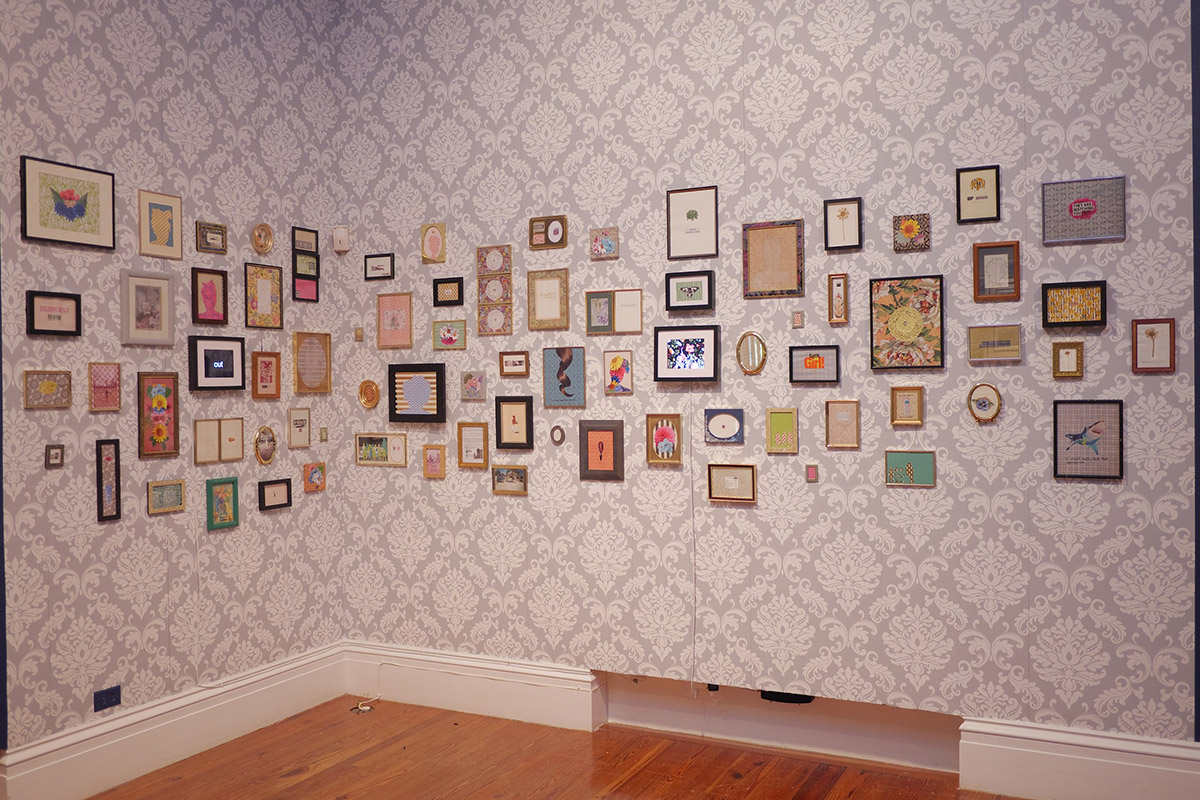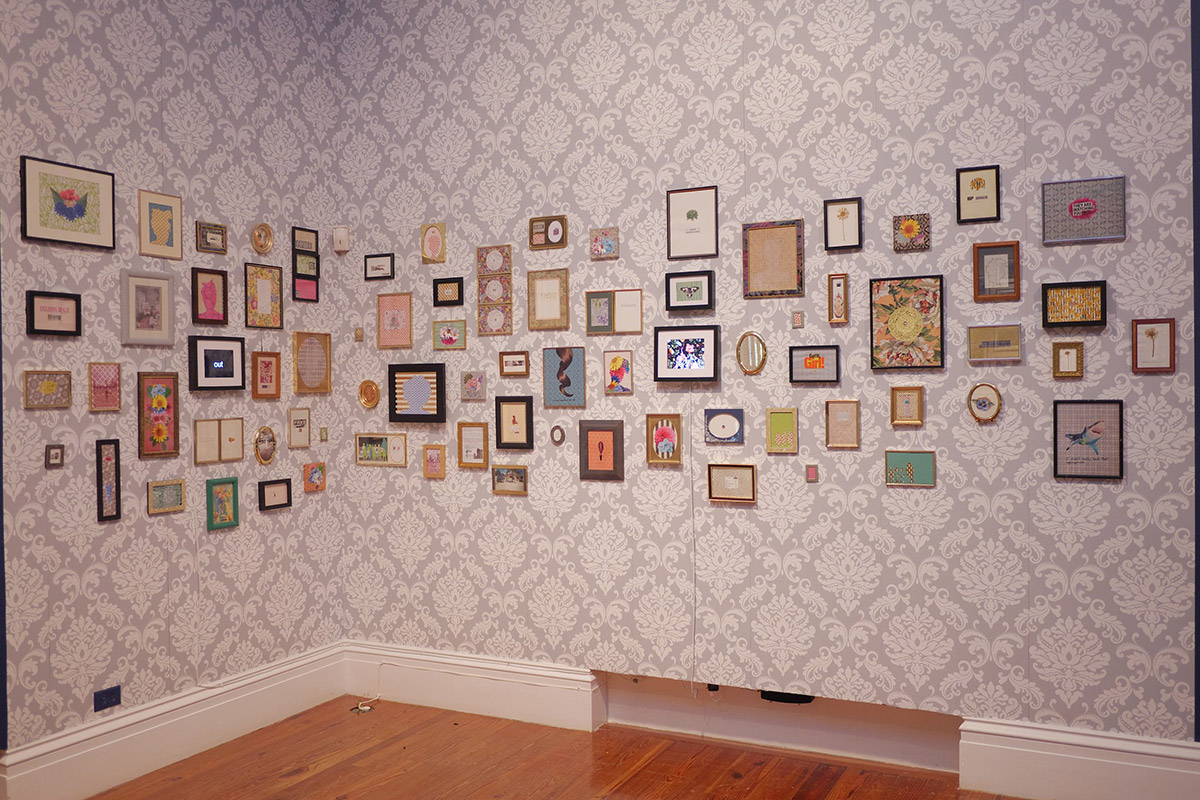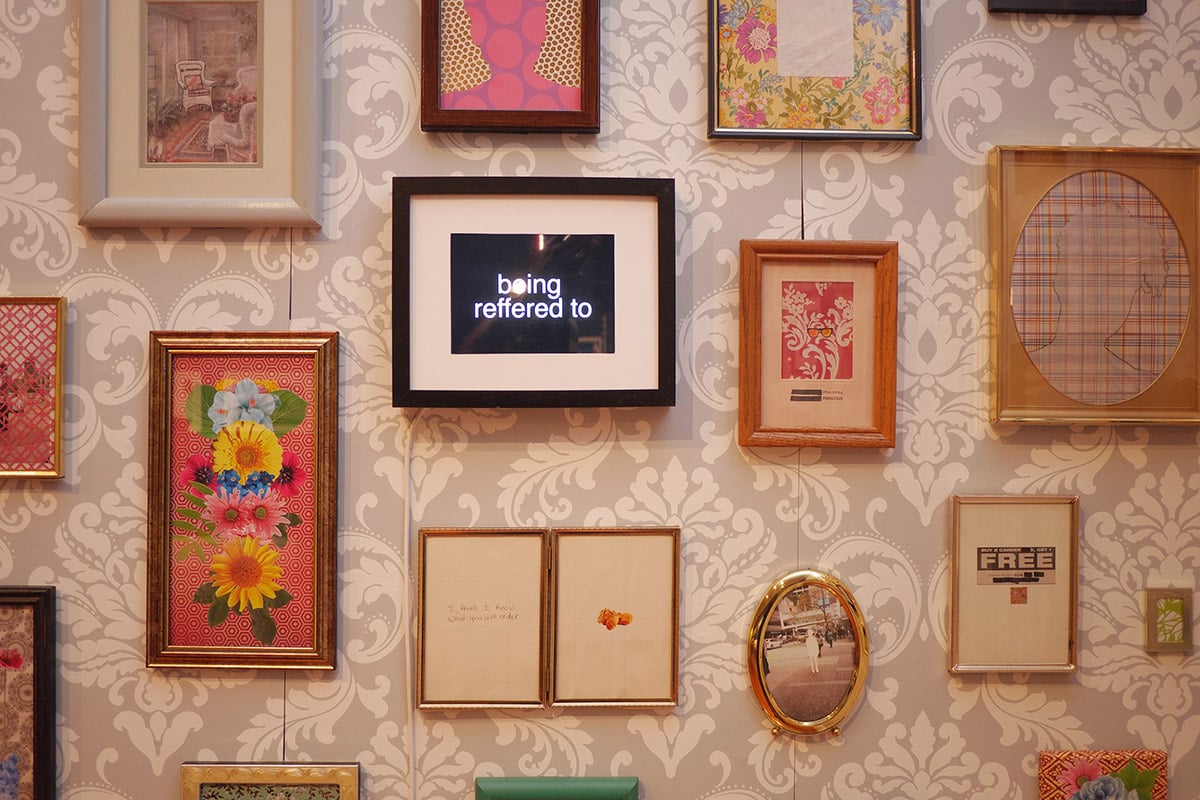
Images have always been controlled by those in power. They have been used to represent us in particular ways that we usually have no control over. During slavery, blacks were depicted in a specific manner, and black women were always rendered either as workhorses, conniving thieves, jezebels, or wanton women, , who could not control their bodies.
These women belonged to slave masters and mistresses who abused them, as we can see in a text like The History of Mary Prince, a slave narrative that communicates Mary’s experiences in Turks Island, London, and on a salt farm in the southern Bahamas. Mary is allowed to speak as an enslaved African woman to forward the abolitionists’ agenda to end slavery. The story was carefully ‘controlled’ or ‘managed’ so as not to come across as too strong for public consumption and thereby to upset people’s tranquility.

Giovanna Swaby. “I learned in Passing”. Collage, Video, Found Objects. Installation view at the National Exhibition 8 at the National Art Gallery of The Bahamas. 2016.
Enslaved women were always trying to provoke their master’s sexual desires because they were vixens. According to many sources such as the masters’ wives and other upstanding folks in the colonial community, who saw the danger of blacks stealing the heads of otherwise good and noble white men. Thomas Thistlewood’s journals say otherwise, however; they demonstrate how the overseer was carrying on with these ‘terrible women’ while they were blamed for their animal-like desires. This image and perception continues today and it is a representation of black women, especially black, Caribbean women who are shown to be hyper-sexualized and lascivious.
This representation is constantly at odds with other versions of facts, as experienced by those victims of representation and the colonially-biased images deployed to render the Caribbean subject easily controlled. This project is even more insidious as it also finds its way into formal and informal representations of life in the tropics, as Bahamian Art Historian Krista Thompson discusses in her book An Eye for the Tropics. These images were used to sell the tropics as a safe space for European exploration, where blacks were servile, and the landscape was succulent.
It is by no accident that after 50 years of Majority Rule, these same images are redeployed to attract foreigners to come and experience the pleasures of The Bahamas. The words may have changed slightly, but the message remains the same: “We are here to be explored,” read: “enjoyed and exploited.” According to the same representation, our perverse ways continue and our inability to control our animal instincts are renown.
Edward Said and Stuart Hall have done groundbreaking work that exposes these images and projects, yet still they circulate. Internally, given the politics, seats of power and history, we know little of this. We may get glimmers of an idea but the full weight of the historical disempowerment through dangerously biased representations is often overlooked because of the way history is taught. Compounding this is the lack of knowledge of Bahamian history and the deeply flawed ways as to how it has been taught. We are unconscious of our co-opted vision and rendition. We are then shocked when we venture out of paradise to find that ‘folks’ out there believe that we live in grass/thatch huts and do not have electricity or running water; yet, they can drive to Paradise from the United States and they will be treated like kings when they arrive here. We will lay down for a dollar and satisfy all manner of fantasies that have been packaged for “The Caribbean Dream Re-sale.”

Giovanna Swaby. “I learned in Passing (detail)”. Collage, Video, Found Objects. Installation view at the National Exhibition 8 at the National Art Gallery of The Bahamas. 2016.
One project in The National Art Gallery of The Bahamas’ National Exhibition 8 explores this scenario. Giovanna Swaby’s ‘self-portrait’ as exoticised, rendered subject to others – see Moira Ferguson’s book on women in the 19th Century – by the re-engineered colonial gaze that holds non-white women, especially those of Caribbean descent as sexual savages and salacious women.
Swaby ‘discovers’ or ‘uncovers’ her ‘identity,’ the identity that was allowed to her by the ‘west’ while she resides in Western Canada. Ironically, the Western Canada of the 1980s was not as aware of these politics as it is today. As a teenager, who previously occupied that locale, it shocked me that the images and knowledge of The Bahamas has changed. By the 1990s, when I would buy a ticket to fly home, the response was, “Why would you want to go there, it’s lovely, but they all sell drugs and harass tourists.” We learned quickly how little others know about us, but how much we may think we know about them and ourselves. When met by the disjuncture between what we think we know about ourselves and what they ‘know,’ we are easily perplexed.
The power that has created this image – disembodied, de-contextualised and deeply dehumanised – has remained out of our control. It is managed by a machine that deploys messages that sell a place through very limited and essentialised visual imagery and iconography. We, as representatives from that place, then become defined by its marketing plans and strategies. So, as The Bahamas sells itself overseas more aggressively, not as a space of reality – where real people have bad hair days and nights, or a place where people are troubled because of hours-long power outages and gunshots disturbing slumber – but as ‘tax haven-cum-paradise,’ this monolithic narrative continues to be perpetuated. This narrative stems back to a moment in the ’70s and ’80s where, as recently declassified CIA papers show, the country became a den of iniquity and lawlessness, encouraged by powerful people who held the sway of the nation in their hands.
During the 1980s, the world was deeply Balkanised, and many places would not receive media images until later, well into the ’90s or ’2000s because globalisation had not come into its full impact. This is similar to the delay in images gaining currency from colonial times, given the long travel time getting from place to place required, information spread far more slowly. This meant that old images died hard and that new images were very late in arriving and then being taken up as fact and then circulated.
Remember the Club Med 60-second ad slots? They were a big part of the company’s marketing scheme and they rendered us as a fabulous, hot, sandy beached, blue-watered dream in the middle of winter. We became even more deeply exoticised by these ads, though they only sold a product.
As Swaby’s work demonstrates, we must leave home to become aware of how we are seen and how deeply nuanced, entrenched and timelessly managed our exploited image is. We do not own our image. Our representation is owned by a colonial government, travel company, plantation owner, colonial travel writer who ‘saw’ first hand what we could do.
Today, marketing companies in New York work on behalf of postcolonial governments and FDI corporations to deploy these deeply sexualised representations and they are rewoven into the historical text of lascivious and muted black women who will throw themselves at the feet of any white man for a dollar.
Come to The Bahamas, and if you see me where you are, you can dream about me there too. Swaby’s work tackles this head on. Can we ever exist outside of that frame?